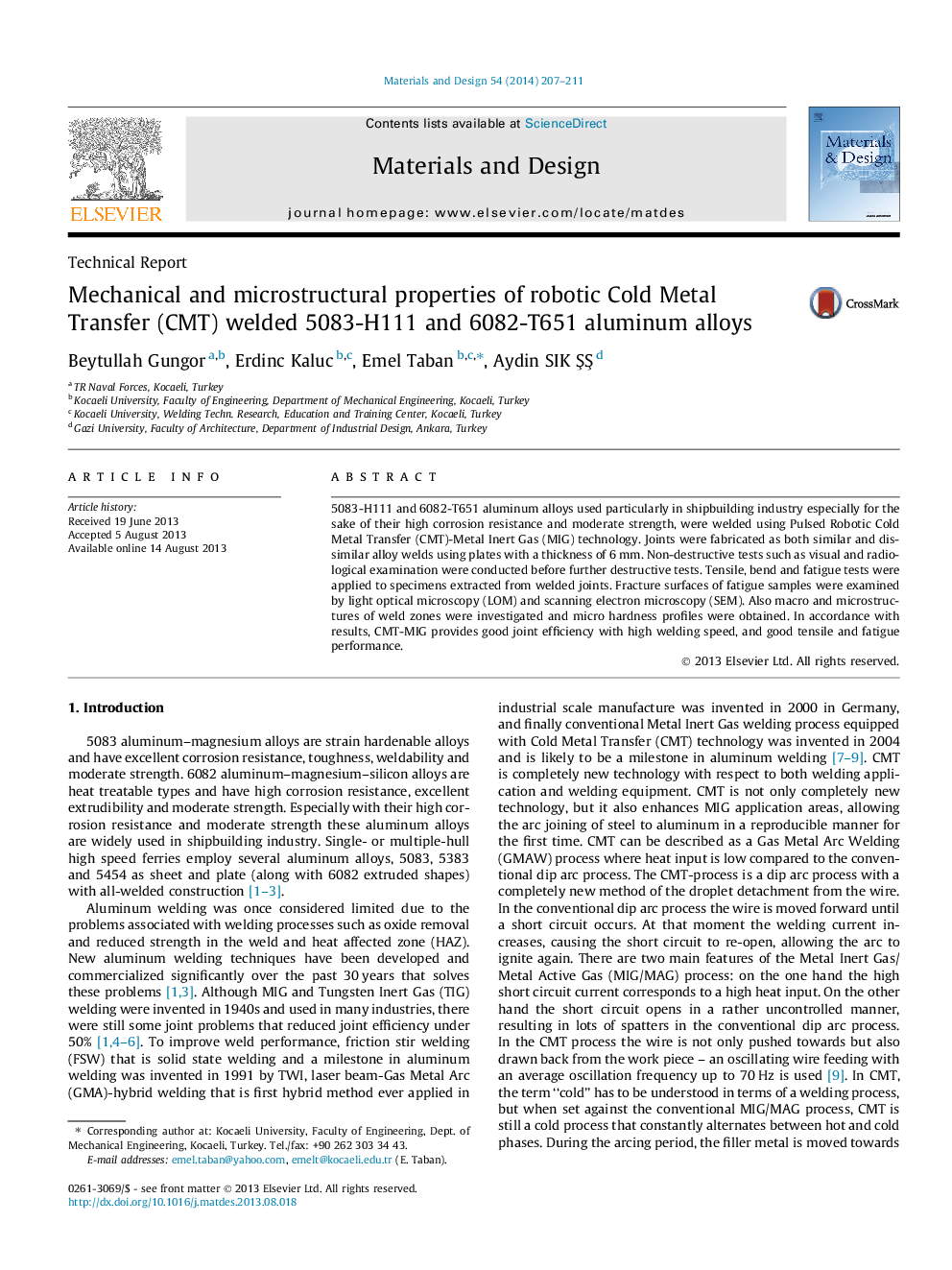| Article ID | Journal | Published Year | Pages | File Type |
|---|---|---|---|---|
| 829630 | Materials & Design (1980-2015) | 2014 | 5 Pages |
•5083&6082 alloys were welded by robotic CMT process with 0.4 m min−1 welding speed.•CMT Pulse showed higher Rp0.2 values than any other methods previously studied.•5083 similar weld (M55) showed best fatigue results, compared to welds M56&M66.•Fatigue results were parallel with porosity and yield stress values of the related joints.
5083-H111 and 6082-T651 aluminum alloys used particularly in shipbuilding industry especially for the sake of their high corrosion resistance and moderate strength, were welded using Pulsed Robotic Cold Metal Transfer (CMT)-Metal Inert Gas (MIG) technology. Joints were fabricated as both similar and dissimilar alloy welds using plates with a thickness of 6 mm. Non-destructive tests such as visual and radiological examination were conducted before further destructive tests. Tensile, bend and fatigue tests were applied to specimens extracted from welded joints. Fracture surfaces of fatigue samples were examined by light optical microscopy (LOM) and scanning electron microscopy (SEM). Also macro and microstructures of weld zones were investigated and micro hardness profiles were obtained. In accordance with results, CMT-MIG provides good joint efficiency with high welding speed, and good tensile and fatigue performance.
